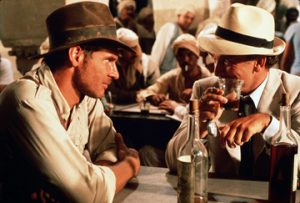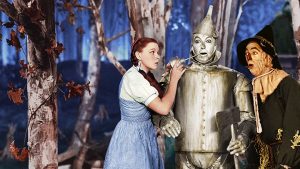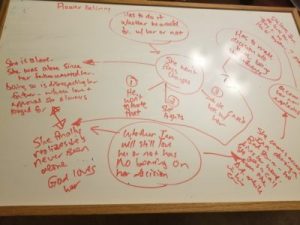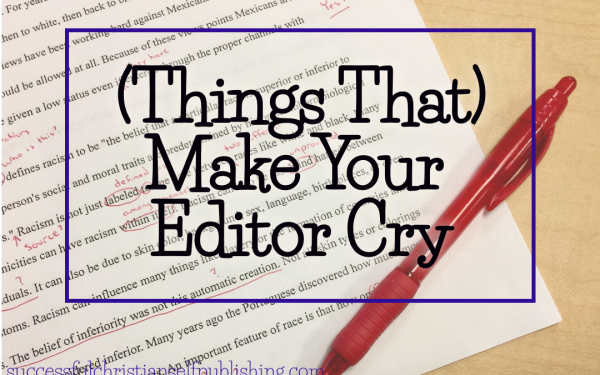Character Motivations

MOTIVATIONS
What exactly does “character motivation” mean? It’s a simple definition for a deep and complex concept: Character motivation is what the character wants and why he or she wants it. It’s the reason a character acts a certain way. In reality, character motivation is created when you create that three-dimensional character we talked about.
- Motivations reveal characterization.
- They distinguish characters.
- They drive action.
- They create drama.
- They spawn character growth.
You are really unlimited in the number of different motivations you can give your characters. The motivations reveal who your character currently is or who your character currently strives to become. Through motivations, we see personality, desire, choices, reactions and actions, and everything else that defines us individually. Having motivations come clear in your writing gives your readers a chance to truly know your character.
 Motivations also distinguish good versus bad characters. A great example is Raiders of the Lost Ark. Indiana Jones’ motivation when it came to the priceless artifacts he found was to preserve them in a museum. Rene Belloq’s motivation was to sell them to the highest bidder. Thus the protagonist and antagonist were formed, and the motivations revealed who was the good guy and who was the bad guy. When you have two characters with such opposing motivations, it helps create tension. This is an effective way to keep readers on edge, wanting to keep reading to see how this tension, this conflict, this opposition will be resolved.
Motivations also distinguish good versus bad characters. A great example is Raiders of the Lost Ark. Indiana Jones’ motivation when it came to the priceless artifacts he found was to preserve them in a museum. Rene Belloq’s motivation was to sell them to the highest bidder. Thus the protagonist and antagonist were formed, and the motivations revealed who was the good guy and who was the bad guy. When you have two characters with such opposing motivations, it helps create tension. This is an effective way to keep readers on edge, wanting to keep reading to see how this tension, this conflict, this opposition will be resolved.
Motivation helps drive the action. While Indiana is seeking the lost ark, he is having to do it clandestinely, knowing Belloq is looking for the same thing. Protecting the ark from the Nazi’s who steal it drives him to commandeer one of the military trucks and chase it down.
Motivations spawn character growth. Since one of the main things that readers are seeking in the story is a way to connect with the characters, then the journey a character makes through the story is a journey that the reader will experience and feel as well. A great example of this is Dorothy in The Wizard of Oz. She begins the story unable to stand up to the mean woman who took her dog from her. Through her adventures in Oz, motivated by a desire to go home and motivated by a desire to help people around her who are in trouble, she grows in courage and compassion, so that by the time she makes it back home, her journey is something that the reader (or viewer) has felt deep in his or her soul.
 Internal motivations are forged inside of a character, and come from the character’s personality combined with his or her life experiences. Dorothy is motivated by compassion for her fellow man, or lion. External motivations are those that generate a required response from the character, either from circumstances that occur during the course of the story, or from the actions or reactions of the characters around them. Dorothy’s home is blown away by a tornado, taking her to a land over the rainbow. She desires to return home.
Internal motivations are forged inside of a character, and come from the character’s personality combined with his or her life experiences. Dorothy is motivated by compassion for her fellow man, or lion. External motivations are those that generate a required response from the character, either from circumstances that occur during the course of the story, or from the actions or reactions of the characters around them. Dorothy’s home is blown away by a tornado, taking her to a land over the rainbow. She desires to return home.
As you are writing, you need to make the motivations clear to the reader. You can see Dorothy’s heart in the way that she interacts with the farm hands then with the characters in the Land of Oz. You also know her external motivation because she plainly states it, “I want to go home.” If a character just acts without making the motivation clear, then the reader is not going to be drawn into the story in quite the same way, and will have a harder time connecting with the character.
How does motivation reveal characterization? The truth is that actions speak louder than words. You can say that Dorothy is compassionate, or you can show her crying over hurting the tail of Lion. Actions driven by motivation reveal more about the character than anything the character says or anything you may say in the narrative. By using reactions to motivations in the story, then you’re “showing not telling”, and the reaction to motivations will organically and naturally reveal the character’s personality and likely even back story.
Also, consider that actions have consequences. When you have a main character react to a motivation, be it internal or external, there are going to be consequences, which can reveal the motivations and characteristics of other primary or even secondary characters. However it works out, your characters’ motivations will affect those people around them. If they don’t, then there’s a hole in the development of your characters.
 How do you determine your character’s motivations? The best way is to flesh it out. I like to write it down on a big white board, with my character in the center and actions/reactions/consequences drawn all the way around, with lines connecting one action to another reaction to another motivation, connecting to a previous action/reaction. It ends up looking like a complex flow chart when I’m done.
How do you determine your character’s motivations? The best way is to flesh it out. I like to write it down on a big white board, with my character in the center and actions/reactions/consequences drawn all the way around, with lines connecting one action to another reaction to another motivation, connecting to a previous action/reaction. It ends up looking like a complex flow chart when I’m done.
Your character’s actions and reactions to internal and external motivations needs to ring true. Even in incredible situations that are fantastical and amazing, your reader can get lost in a “suspension of disbelief” — but only if the characters act and react in a realistic way.
Readers need the completeness of the characters. They crave that as they’re reading. The fact that so many of my reviews bring up how much readers relate to my characters tells me that it is something that is lacking in Christian fiction.

With nearly a million sales, Hallee Bridgeman is aUSA TODAY best-selling and award-winning Christian author who writes action-packed romantic suspense focusing on realistic characters who face real-world problems. Her work has been described as everything from refreshing to heart-stopping exciting and edgy. Hallee has served as the Director of the Kentucky Christian Writers Conference, President of the Faith-Hope-Love chapter of the Romance Writers of America, is a member of the American Christian Fiction Writers (ACFW), the American Christian Writers (ACW), and Novelists, Inc. (NINC). An accomplished speaker, Hallee has taught and inspired writers around the globe, from Sydney, Australia, to Dallas, Texas, to Portland, Oregon, to Washington, D.C., and all places in between. Hallee loves coffee, campy action movies, and regular date nights with her husband. Above all else, she loves God with all of her heart, soul, mind, and strength; has been redeemed by the blood of Christ; and relies on the presence of the Holy Spirit to guide her.

